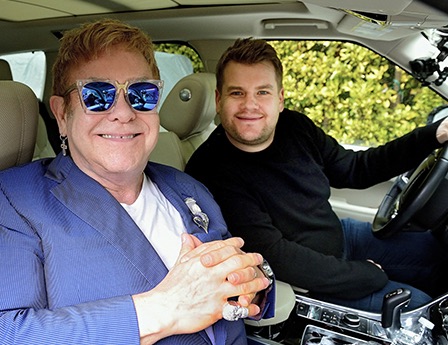It’s a Bedtime Battle Royale

We hear often of this golden age of television, and one could certainly make the case that late night itself is particularly gilded. John Oliver brought his gimlet wit back to HBO Feb. 14, and Samantha Bee’s Full Frontal debuted on TBS Feb. 8, the two joining a long lineup of hosts—Jimmy, the other Jimmy, Stephen, Conan, Trevor, Carson, James and Seth, along with others that may need their surnames to be fully identified—clawing for after-hours eyeballs.
Are there enough viewers to go around? Probably not in their linear time slots. “Like everybody else, I watch the highlights online,” says Ken Levine, a veteran comedy writer (Frasier, The Simpsons) who teaches TV writing at UCLA. “This is late night in the 21st century. The goal is different. The goal is clickbait.”
Indeed, digital shorts— Jimmy Fallon’s Classroom Instruments jams, James Corden’s Car Karaoke—are more of a necessity than a value added. Ratings points are only part of the equation as networks rely on the latenight talkers to augment the brand. One network chief who asked to be unnamed cited the “cultural relevance” of Last Week Tonight host Oliver as more important than ratings. “When you’re a part of late night, you have a chance to be relevant,” he says. “Relevance means [viewer] loyalty, and loyalty means revenue.”
Star Craving Mad
It may seem like a few too many late-night shows, but some entertainment veterans suggest that what they represent, including celeb close-ups and a clever take on political absurdities, has never been timelier. Our daily media consumption is rife with political mudslinging, terror and global crisis. The late-show host, says the network chief, is the wisecracking voice of reason. “You check in with them and say, help me forget about this BS, or help me make sense of it,” he says.
Some time ago, a presidential hopeful, or president, appearing on a late show was a major event. Now it’s a given. “If you want to be president,” says Bill Carroll, Katz Television Group senior VP and director of content strategy, “you have to sit in that seat.”
By the Numbers
The smarter way to stay on top of broadcasting and cable industry. Sign up below
The broadcast late-night pool has around $600 million of revenue in play, according to a Kantar Media estimate for 2014. Two years after Fallon took the host job, NBC’s The Tonight Show is averaging a 1.09 rating in viewers 18-49 season-to-date, with CBS’ The Late Show at 0.70 and ABC’s Jimmy Kimmel Live at 0.57. Comedy Central’s Daily Show, meanwhile, is playing to a 0.47 and The Nightly Show a 0.26. TBS’ Conan has averaged a 0.31.
Those aren’t the only numbers that matter. Corden’s Car Karaoke with Adele has close to 68 million views on YouTube; Fallon’s Lip Sync Battle with Ellen DeGeneres has 24 million.
The challenge is delivering the show to the younger generation and getting cross-platform viewing properly measured. NBCU’s deal with YouTube in October to sell ads in online videos was “a watershed moment,” one source says.
It all means more and more sharp, snackable clips. According to Levine, there’s a load of “very exciting and entertaining television after 11 p.m.”—and the day after that. “There always seems to be something really good,” he says, “that’s worth devoting four minutes of my time to.”
COOPERMAN SHIFTS FROM ‘DAILY SHOW’ TO WEEKLY ONE
One of late night’s influential figures is chasing a different muse. Kahane Cooperman, a fixture on The Daily Show from its Craig Kilborn days until last spring, is now showrunner on The New Yorker Presents, the Amazon docuseries that debuts Feb. 16.
“I loved my years at Daily Show,” Cooperman tells B&C. “But I couldn’t exercise all my muscles there.”
Cooperman, exec producer Alex Gibney and others, have reimagined the august periodical into a lively series that honors the magazine experience, with films of various lengths representing different mag sections, and even those iconic cartoons, sprinkled in, produced via time-lapse photography. David Remnick, New Yorker editor and series exec producer, admits the process has been “a little strange.”
“Directors will have a different take, a different point of view, a different set of emphases,” Remnick says. “[A story] becomes something else.”
Gibney says it’s been a healthy collaboration between print and film folks. “There’s a lot of back and forth,” he tells B&C, “with people freely expressing ideas.”
Michael Malone is content director at B+C and Multichannel News. He joined B+C in 2005 and has covered network programming, including entertainment, news and sports on broadcast, cable and streaming; and local broadcast television, including writing the "Local News Close-Up" market profiles. He also hosted the podcasts "Busted Pilot" and "Series Business." His journalism has also appeared in The New York Times, The L.A. Times, The Boston Globe and New York magazine.

